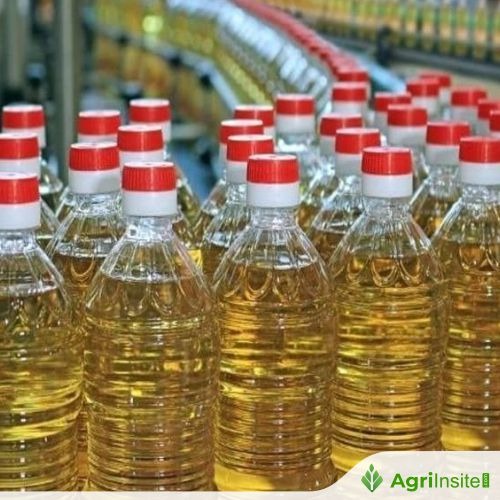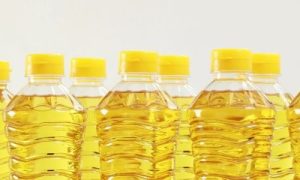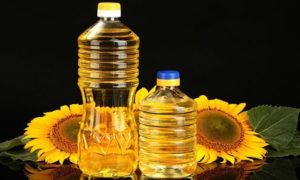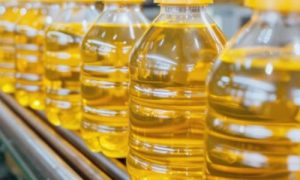Edible oil imports down by 9.87% in the first 9 months of oil year 2024-25

India’s edible oil imports fell 9.87% to 107.56 lt in Nov–Jul 2024-25, mainly due to lower palm oil shipments. Refined oil imports dropped sharply after duty hikes, boosting crude oil refining domestically. Soybean oil imports rose, while CPO and sunflower oil fell. Total imports, including Nepal, reached 112.77 lt.
A decline in the import of palm oil helped India to bring down total edible oil imports by 9.87 per cent during November-July of the oil year 2024-25 (November-October).
Data compiled by the Solvent Extractors’ Association of India (SEA) showed that India imported 107.56 lakh tonnes (lt) of edible oil during November-July 2024-25 against 119.35 lt in the corresponding period of 2023-24.
Apart from the above, Nepal exported mainly refined soyabean oil and sunflower oil and small quantity of RBD palmolein and rapeseed oil to India under SAFTA agreement at nil duty. Import from Nepal stood at 5.21 lt during November- June 2024-25 (eight months).
With this, the total edible oils import by India during stood at 112.77 lt (107.56 lt + 5.21 lt from Nepal) in the first nine months of the oil year 2024-25.
Refined oils shipments slip
BV Mehta, Executive Director of SEA, said there was a sharp decline in the import of refined oils (RBD palmolein) during the period. Increase in import duty difference between CPO (crude palm oil) and RBD palmolein from 8.25 per cent to 19.25 per cent with effect from May 31, 2025, made the refined oil imports uneconomic.
India imported 9.87 lt of RBD palmolein during November-July 2024-25 against 15.18 lt in the corresponding period of the previous oil year. India imported 5,000 tonnes of RBD palmolein in July 2025 against 1.36 lt in July 2024.
Terming the government’s decision to increase the duty difference as a bold and timely move, he said it started discouraging import of refined palmolein and shift demand back to crude oils, thereby revitalizing the domestic refining sector.
This step aligns with the Prime Minister’s vision of ‘Make in India’ promoting domestic manufacturing, increasing capacity utilisation, encouraging value addition, and creating employment opportunities. It represents a win-win scenario for both the industry and consumers, he said.
Crude edible oils also fall
India imported 97.68 lt of crude edible oils during the first nine months of the oil year 2024-25 (104.16 lt in first nine months of oil year 2023-24).
While imports of CPO and sunflower oil declined, soyabean oil (de-gummed) increased during the first three quarters of the oil year 2024-25.
India imported 41.09 lt of CPO (52.39 lt) and 20.92 lt of sunflower oil (28.30 lt) during November-July of the oil year 2024-25. Import of soyabean oil (de-gummed) increased to 35.22 lt (22.59 lt) during the period.
Quarterly analysis
Mehta said that import of vegetable oils increased by 6 per cent in the first quarter of the oil year 2024-25 (November-January) due to higher import of soyabean and sunflower oil.
In the second quarter (February-April), import of vegetable oils decreased by 20 per cent due to high price of RBD palmolein and CPO.
He said import of vegetable oils jumped to 43.15 lt in the third quarter (May-July). However, the import was down by 13 per cent compared to the third quarter of the oil year 2023-24 mainly due to record import of 18.6 lt during July 2024.
Major exporters
Indonesia and Malaysia were the major suppliers of RBD palmolein and CPO to India during the first nine months of the oil year 2024-25.
Indonesia exported 17.65 lt of CPO and 8.22 lt of RBD palmolein followed by Malaysia with 16.01 lt of CPO and 1.29 lt of RBD palmolein.
India imported 21.20 lt of crude soyabean degummed oil from Argentina followed by 8.02 lt from Brazil, and 1.88 lt each from the US and Russia during the period. India imported 10.93 lt of crude sunflower oil from Russia followed by 5.20 lt from Ukraine and 2.86 lt from Argentina.
Kharif crop
He said total kharif oilseed acreage stood at 171.03 lakh hectares (lh) as on August 8, registering a 7.11 lh decrease compared to 178.14 lh last year. Of this, the area under groundnut crop was 41.56 lh (43.45 lh last year), soyabean 118.54 lh (123.45 lh) and cotton 105.87 lh (108.43 lh).
He said the decrease in soyabean and cotton area is mainly due to shifting to maize area which has increased by 9.63 lakh ha, that is from 81.99 lh last year to 91.62 lh this year.
To Read more about Edible Oil News continue reading Agriinsite.com
Source : The Hindu Business line














